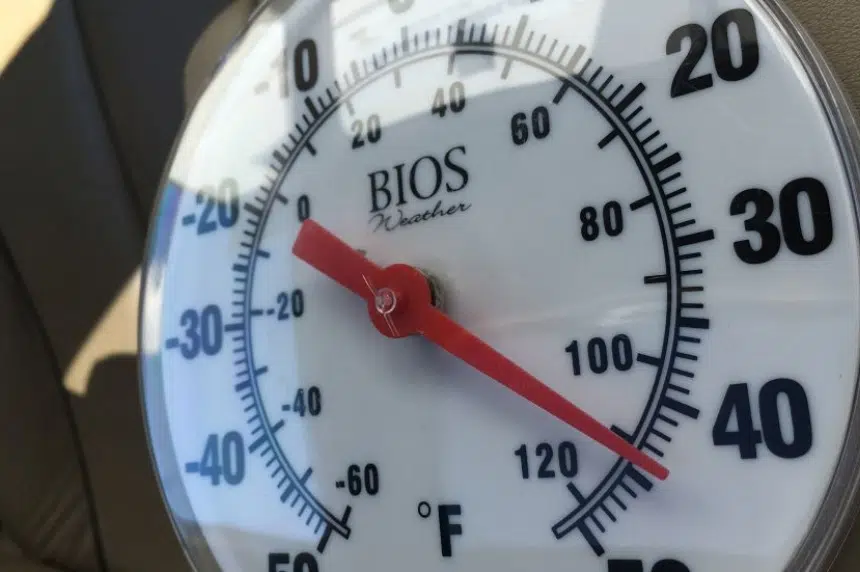As the sweat ran down my head and my eyelids fell heavy, I started to wonder, ‘why am I doing this?’.
My discomfort grew as my joints started to hurt, my energy levels dropped and a headache came on. The air was thick and I could tell I was feeling the effects of near 50 C temperatures while trapped inside a hot car.
This, as Lyle Karasiuk, director of public affairs for Parkland Ambulance and paramedic Eden Shirley drank cold water and watched gleefully the results from the monitoring equipment strapped to my chest and arms.
I subjected myself to these conditions at the request of Karasiuk who sent me an e-mail that read:
“On a hot day, I want to put you in a hot car. Hook you up to some monitoring equipment, have our paramedics standing by and illustrate to people the dangers of leaving kids or pets in a hot vehicle.”
Who could say no to that?
I am doing an experiment to see first-hand the adverse effects of leaving someone inside a car on a hot summer day. #ypapic.twitter.com/jNwg8xEhff
— Tyler Marr (@JournoMarr) July 3, 2017
It was nearly 28 C outside – 23 C inside the car – when I began the experiment.
After a few minutes, the car was near 30 C and I was starting to show the signs of a heat-related injury. I was sweating profusely and I could already feel my energy levels begin to drop.
Karasiuk kept a running commentary as I roasted inside the car.
“Hot enough for you?” he asked with a smile.
It was around the 25-minute mark when the mercury climbed towards 40 C, that the adverse effects took hold. My heart rate was climbing and my blood pressure dropped. I was becoming irritated and dizzy. Karasiuk said this was my body compensating for the fluid loss.
I went to tweet about the profound experience I was having, but my phone had temporarily bricked. By the time it did turn back on, the car was nearing 45 C and tapping out 140 characters took everything I had. Beads of sweat ran along my arms.
Ten minutes later, the car was near 50 C and I could feel the heat hitting me. I had no energy and a headache was piercing over my left eye. I was thirsty, the air was thick and my breaths were getting shorter. I was nauseated and slightly confused.
It’s almost 50 degrees. I am starting to feel it. It is muggy in here and I am starting get tired. #ypa pic.twitter.com/ePg2LFXZkm
— Tyler Marr (@JournoMarr) July 3, 2017
At this point, the paramedics decide to pull me out of the car. They cracked the door and the 28 C air felt ice cold on my face. I looked down and saw a pool of sweat on the floor. My legs were weak as I wandered inside.
Karasiuk told me my vitals. I had an internal temperature of nearly 40 C (104 F). My heart rate was steady at 125 to 130 and my blood pressure had dropped 20 points.
It took nearly an hour to recuperate and the headache lingered on the next day to remind me of the dangers of high temperatures.
I lasted almost an hour in the car and roughly 30 minutes at temperatures above 35 C. The paramedics said as I am a young, healthy, 20-year-old male, I performed better than most. But a young child or animal left alone in a vehicle might not have been so lucky.
“We are going to hear these horror stories, where moms and dads often are on the way to do some things and they make an extra stop and they might not bring the kids in,” he said.
Two minutes turn to ten and twenty and suddenly a dangerous situation is at hand.
“People in these situations will quickly show signs, get tired and fall asleep, and you won’t be able to wake them up. Now we have a serious heat-related emergency.”
Karasiuk reminded those who do need to venture outside to take frequent breaks and have a place where one can cool off fast.
He stressed the need to remain hydrated with water at all times, and not to substitute this with coffee, sugary drinks, tea or juice.











